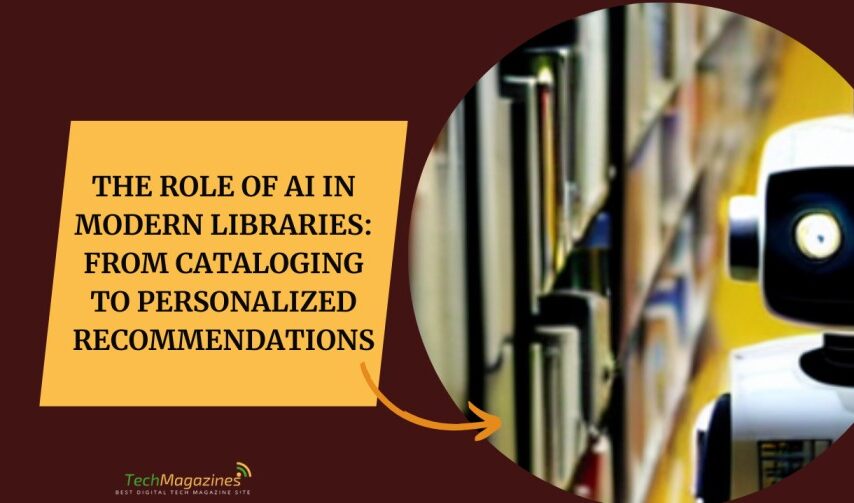Smarter Shelves and Digital Brains
Librarians once sifted through card drawers and typed index entries by hand. Now, artificial intelligence takes care of what used to be one of the most time-consuming jobs—cataloging. AI scans metadata, identifies subject matter, and even detects connections between works that traditional systems often miss. It builds relationships across titles and formats without breaking a sweat. This shift has changed the way libraries handle growing digital and physical inventories.
Machine learning now helps librarians tag materials more precisely. Books, articles, and multimedia resources are easier to find because AI recognises content patterns, not just keywords. That means someone searching for a rare translation of The Tale of Genji” might also be guided to critical essays hidden deep in academic archives. The process becomes richer, faster, and less reliant on guesswork.
Discovery Without the Noise
AI does more than keep records tidy. It transforms how readers find stories and sources. Algorithms trained on borrowing histories and reading habits can recommend materials that hit the mark without repeating the same tired bestsellers. Readers discover lesser-known authors’ new fields of thought and even niche genres they would not have encountered otherwise.
Recommendation engines also sharpen access to learning materials. If someone is researching modern philosophy, the system might connect Sartre’s works to Simone de Beauvoir or offer an unexpected bridge to post-colonial studies. The search stops being a dead-end and becomes a doorway. That kind of curation used to take a seasoned librarian’s eye—now it happens in seconds.
This leads to a larger shift. When digital collections feel more complete when Zlibrary joins Project Gutenberg and Anna’s Archive, the effect is almost symphonic. The availability broadens the base, the suggestions deepen the reach and modern libraries stop being static archives and start behaving like intelligent ecosystems.
Where AI Meets Everyday Use
Even with all the tech behind the curtain, modern libraries still have a human pulse. AI tools now serve the quieter everyday needs that most visitors do not even notice. Voice search image recognition and text-to-speech features make libraries more inclusive. Readers with visual challenges or language barriers can access resources without feeling left behind.
There is also a quiet beauty in how AI handles archives. Old newspapers, handwritten letters even fading photographs can be scanned, restored and added to searchable databases. What used to gather dust now glows on a screen. The line between past and present thins and readers get to experience history without travelling through time machines.
In the middle of this evolution AI has become more than a tool—it is a co-curator, a translator a guide. It works behind the scenes to keep knowledge flowing in the right direction:
- Adaptive search systems
These tools do not just follow queries—they understand intent. Whether someone types “birds of Britain” or “UK songbirds” the system narrows in on what matters most, refining results with uncanny accuracy.
- Intelligent reading companions
Some AI tools adjust the content format based on individual preferences. They can switch between text summaries and full articles or offer vocabulary support for second-language readers without making them feel exposed.
- Predictive inventory management
Libraries use AI to monitor borrowing trends and stock levels. When interest in a subject rises, the system flags gaps in the collection, prompting timely acquisitions that stay ahead of demand.
- Semantic mapping for cross-subject links
Instead of isolating fields, AI connects dots across disciplines. A search for “urban architecture” could surface texts on sociology, public health, and even climate resilience—broadening understanding through curated intersections.
- Real-time translation engines
Visitors browsing foreign texts can now understand them on the fly. AI translates entire books or paragraphs, preserving tone and nuance better than an old-school dictionary flipping ever could.
With these tools in place, the library becomes more than a space to borrow books. It becomes a multilingual multifunctional companion that grows with its users. It adapts, learn,s and mirrors the shifting rhythms of thought and culture.
A Future Written in Code and Curiosity
AI has not erased the human side of libraries. It has simply cleared the clutter. With smarter systems, librarians spend less time on admin and more time guiding discovery, supporting research, and preserving voices that might otherwise be forgotten. The balance between machine precision and human judgment gives modern libraries their shape.
The role of AI will likely expand, but it will not replace the soul of a library. People still walk between shelves, still get lost in stories, still chase ideas across pages, both printed and digital. The job of AI is not to outshine that experience. It is to keep the lights on to organise the chaos and quietly open more doors.







